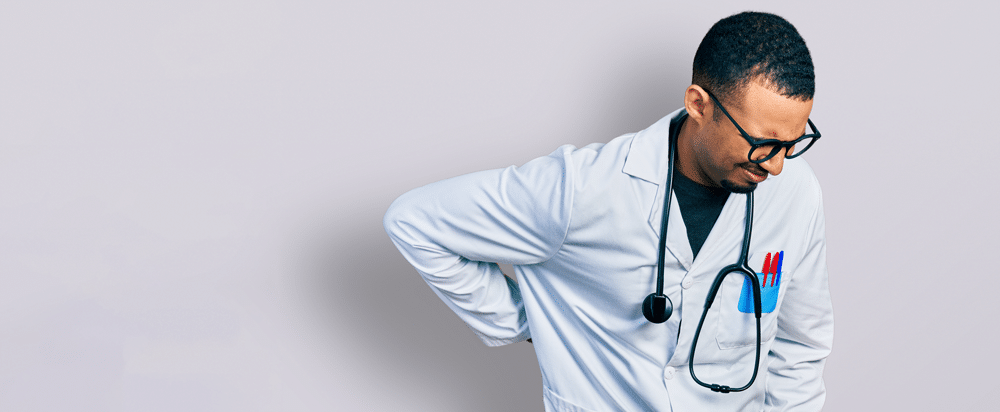What causes musculoskeletal injuries (MSIs) in hospitals? – 6 of the most common causes
Working in a hospital environment can be physically demanding, requiring staff to perform various tasks that involve repetitive movements and heavy lifting or pushing and pulling.
Unfortunately, these tasks can take a toll on their musculoskeletal system, leading to Musculoskeletal Injuries, commonly known as MSIs.
In this article, we will explore 6 of the most common causes of MSIs in hospitals, exploring the factors that contribute to these injuries.

1. Patient handling and transfer
One of the primary causes of MSIs in hospitals is the manual handling and transfer of patients. Hospital staff often assist patients in moving from beds to stretchers, wheelchairs, or other medical equipment.
These activities involve lifting, pushing, and pulling, which can strain the muscles and joints, especially when performed repeatedly or without proper lifting techniques. Factors like patient weight, limited space, and lack of suitable equipment further increase the risk of MSIs during patient handling.
Related article: 5 Tips For Avoiding Injury When Moving And Handling Patients
2. Awkward postures and repetitive movements
Healthcare professionals frequently perform tasks that require them to adopt awkward postures or engage in repetitive movements. For example, bending, reaching, twisting, and maintaining static positions for prolonged periods are common while providing patient care, administering treatments, or operating medical equipment.
Such repetitive and awkward movements can strain the muscles, tendons, and joints, leading to MSIs over time.
Related article: How to avoid injury when moving and using a C-arm camera for fluoroscopy
3. Unsuitable equipment
Poorly designed and unsuitable equipment in hospitals can greatly impact how a staff member carries out a task, subsequently impacting the risk of MSIs.
A lack of suitable equipment to support staff in carrying out a patient-handling task, such as lifting a fallen person off the floor, can lead them to rely on manual lifting, increasing the risk of injury to both the caregiver and patient.
Related product: Raizer 2 Emergency Lifting Chair
4. Work environment and demands
The hospital work environment itself can contribute to MSIs. Factors like a fast-paced and high-stress environment, long work hours, inadequate staffing levels, and insufficient rest breaks can contribute to physical fatigue and reduced concentration.
Fatigue can decrease muscle strength and coordination, making staff more susceptible to MSIs.
5. Lack of training and education
Insufficient training and education on proper body mechanics, safe patient handling techniques, and ergonomics can contribute to the occurrence of MSIs. When healthcare professionals are not aware of the best practices for injury prevention, they may unknowingly perform tasks that increase their risk of musculoskeletal injuries.
6. Lack of appropriate risk assessments
One of the best ways to prevent MSK injuries and problems is to thoroughly risk-assess the manual handling task that needs to be carried out and to regularly review and update risk assessments when necessary.
In this article, we have collated the top 5 free risk assessment tools for you, which you can download and use as required – 5 Best Patient Handling Risk Assessment Tools in 2023
Conclusion
Musculoskeletal injuries are a significant concern in hospitals, and understanding the causes of these injuries is key to implementing effective preventive measures.
Even by addressing just one of the issues above, such as providing more training and education, or replacing unsuitable equipment, hospitals can significantly reduce the risk of MSIs and reduce the impact they have on your staff, your patients, and the system as a whole.
Related articles
6 of your most common questions about the Felgains Bed Movers, answered
How does the Felgains ImageFlow stretcher improve efficiency in imaging departments?
The Raizer Lifting Chair vs Inflatable Patient Flat Lift – which is best for hospitals?
Get in touch
Got a question or want to send us a message? Let’s talk.